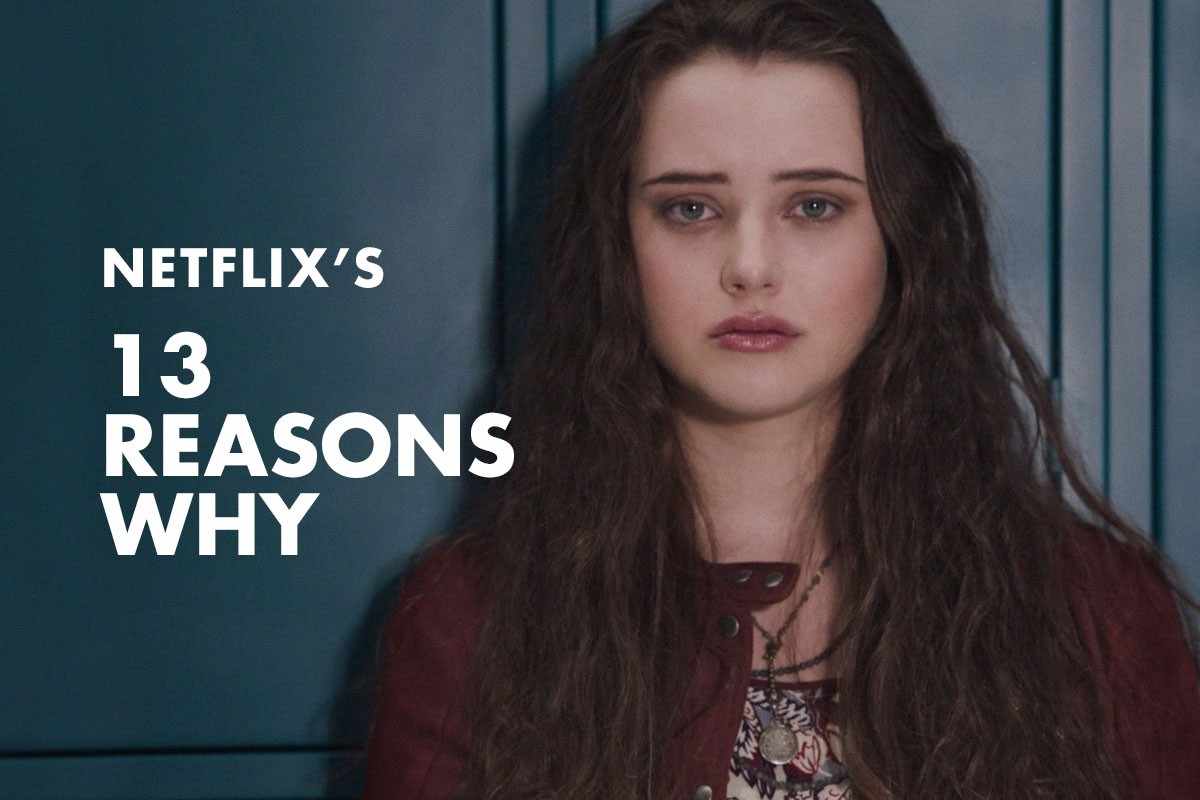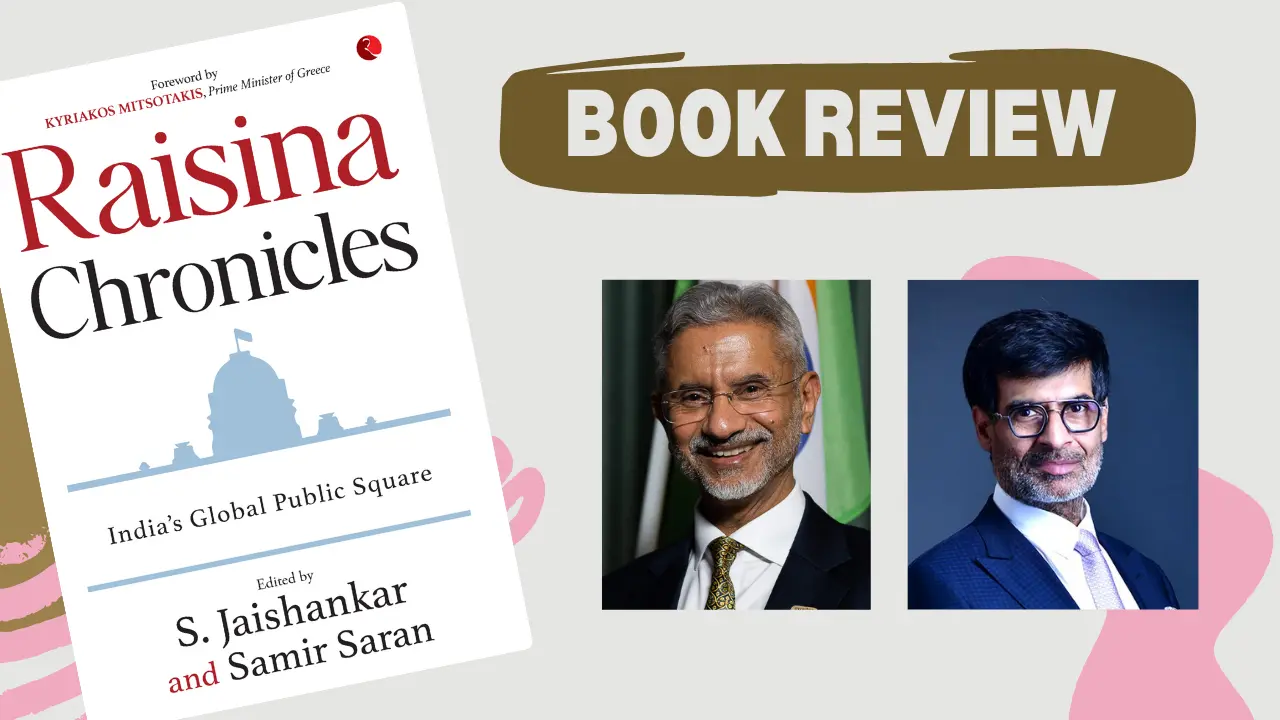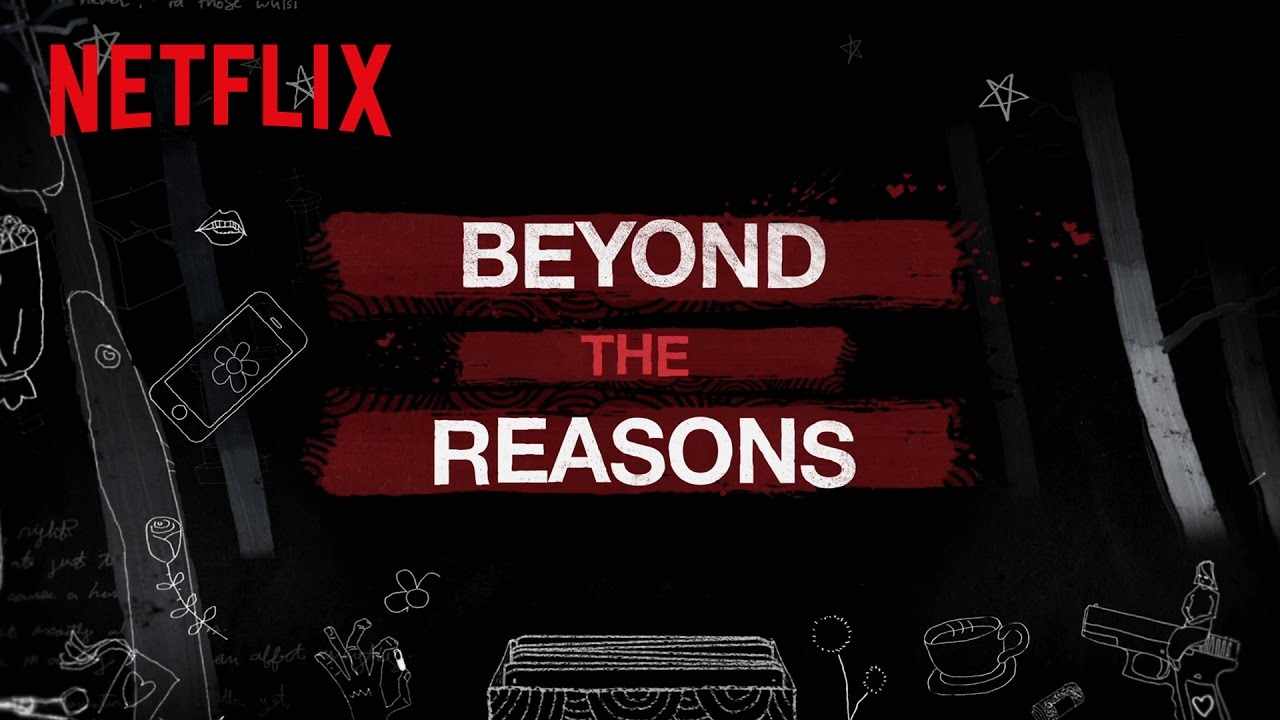Latest Art & Culture
13 Reasons? Really?
Published
8 years agoon
By

[vc_row][vc_column][vc_column_text]Some say the US TV show of a similar nomenclature is a harmless work of fiction meant to entertain and it is not, repeat not, promoting a trend of copycat suicides. Not many guardians of teenagers believe that. Is there any basis to their fears? What are their arguments? A study
By Mrinal Verma
Since the worldwide release of Th1rteen R3asons Why on Netflix on March 31, 2017, it has become the most popular TV series. The US show, based on a novel of the same name by Jay Asher, narrates the story of Hannah Baker, a high school student who kills herself and leaves behind 13 tapes, one for every person in her life who purportedly drove her to take such an action.
The depiction of suicide onscreen has always been a sensitive issue, and those who portray it usually prefer to tiptoe around the subject. Yet, with the final episode’s gory scene of suicide, Th1rteen R3asons Why danced freely over those boundaries.
On June 5, 2017, Peruvian 23-year-old Franco Alonso Lazo Medrano killed himself by jumping from his high-rise apartment. He left behind tapes for the people whom he blamed for his suicide. The gesture had clearly been inspired by the TV series and it opened the floodgates of criticism on its creators.
And this week, families of two girls from the San Francisco Bay Area complained that their daughters committed suicide in April under influence of the teen drama.
ANGSTY AND ALLURING
The problem, sociologists say, lies in the motive of the series, based on the eponymous young adult novel written by Jay Asher and published in 2007. The aim, they allege, is not to highlight teenage issues, as it claims to do, but showcasing them in a way that will push up viewership and rake in revenue. The devil, they say, is in the details.
To begin with, is the form of the narrative and its treatment which, according to critics, are problematic.
In order to present an exciting and addictive show that will keep everyone hooked till the last minute, the story is presented as a mystery, and a blow-by-blow account of Hannah’s inexorable slide into depression ending in suicide through the route of bullying, slut-shaming and rape.
Every episode ends with the statement, “Hannah killed herself”, which silences everyone else, and seems to send out the idea that someone killing themselves is not an unfortunate event but a resounding reply to all events that preceded it.
The story, which is said to have started with her suicide, moves on from the subject five minutes into it, and is more focused on finding people to blame for it, may be, even deciding who shoulders the largest share of responsibility. The message that it presents at the end of the day is not that depressed people should get help and that suicide should be prevented, but that if you cannot get things to go your way when you are alive, you may just be able to do that after your death—by forcing people to privately accept their culpability (if someone refuses to listen to the tapes, she has posthumously threatened to have them released in the public domain). This not only inadvertently promotes suicide but also glamorises it.
As does the graphic portrayal of the act itself—with its massive audiovisual impact on the audience.
NOT A MAJOR INFLUENCE?
But, of course, the counter-argument to all of this is that the morbid, sordid, often-lurid and highly-sensationalist series is so full of melodrama and has such a weak storyline that its effect on audiences won’t be enduring. After all, the artistic quality of a work is one of the main determinants of the extent of its influence.
The graphic portrayal of the act itself may also work as a deterrent, according to some observers.
And if a person themselves is ultimately to blame for their own suicide, well then, we can’t really blame a show or a third party for it should it happen in all good conscience, can we? This is after factoring in both the existence of abetment and copycat suicides.
IRRESPONSIBLE BLAME GAME
Granted that abetment to suicide is a crime, these cases are argued painstakingly in court to establish guilt. The show blatantly ignores the fact that suicide is an action taken by one person and one person only. It promotes a kind of grievance/victim politics wherein the person at the receiving end automatically qualifies for sympathy and need not display valour or resilience or even integrity in the face of adversity, indeed prove herself.
And, its careless, really irresponsible, effort of shifting blame is highly questionable, especially as the show is mostly aimed at young adults and teenagers and can easily trigger similar behaviour in society.
After watching this show, people might end up cruelly blaming already-bereaved friends and family of a suicide victim, without adequate knowledge of their circumstances and very often baselessly and totally erroneously, driven by a shallow interpretation of the story and an overriding desire to behave like their favourite character(s).
For instance, in regressive societies, if someone takes this step after crumbling under peer or parental pressures or being otherwise unable to cope with wrongheaded expectations, it is their well-wisher or true friend who may turn out to be the unfortunate target.
One important character in the show is Clay Jensen, who was in unrequited love for Hannah. He is one of the people to receive the tapes (and hence share the blame), and who, throughout the series, pursues his own quest of justice for Hannah, or at least the justice he thought she deserved. This is, even as Hannah specifies that he is not meant to be on the tapes but is being included only as a witness. Because, if he truly isn’t, then the show is a misnomer.
NO MEANT YES?
Hannah and the others around Clay blame him for her death, claiming that his lack of romantic advances towards her contributed to it. This portrayal is an epitome of the glorified connection between depression and love. Clay’s famous line in the finale, “I cost a girl her life because I was afraid to love her”, might seem romantic and heartbreaking, but actually diminishes the very real struggles that a mentally ill person goes through. By claiming that Clay’s love could have cured Hannah is making light of a serious issue like depression that cannot be solved by someone just loving you back; it is a full-fledged illness which needs professional intervention.
Clay’s love, which he offered to Hannah at a party, was rejected when she orders him to leave her alone, but the show still blames him for causing her suicide, by suggesting that had he confessed his feelings for her, she would not have taken this step. Ever heard of the concept of show, not tell? This not only makes light of the issue of suicide, but seems to problematise consent. Or, one can say that it only highlights the very common fact that people so often do not know their own minds.
ONE GOOD REASON
But the one good reason why Th1rteen R3asons Why is problematic is, perhaps, not because it shows suicide or seeks to divert blame for it but because it reinforces the intrinsically misogynist and patently false notion that the effects of rape are always permanent and one cannot survive rape. To that extent, it is a part of a long literary tradition including works such as William Shakespeare’s The Rape of Lucrece.
Bryce’s rape of Hannah is shown as the final nail in the proverbial coffin for her and the trigger for her suicide. Till that point, the bullying, misbehaviour and resulting loneliness that Hannah faces are actually rather commonplace occurrences.
Since the malpractice of stigmatising rape victims still persist in many societies and, historically, has been present in all parts of the world, creating such a storyline is not only unimaginative but also insidious. It also makes one wonder about the state of feminism and whether America, once its flagbearer, is suffering the ill effects of globalisation in that it is succumbing to negative influences from other parts of the world.
COPYCAT SUICIDES
Contrary opinions notwithstanding, many psychologists opine that the visual presentation of Hannah killing herself is most possibly the biggest facet of it that the show gets wrong. But suicide is also a philosophical decision for some. At the same time, it can take the form of a social trend or fad.
The 1770 suicide of English poet Thomas Chatterton sparked some copycat suicides. Written around the same time, The Sorrows of Young Werther, a novel by German philosopher Johann Wolfgang von Goethe, climaxed with the suicide of its protagonist. There were reports of plenty of suicide cases that were triggered by it, with people trying to imitate the scene, so many of them that copycat suicides came to be known as the Werther effect. The publication of Albert Camus’ pathbreaking 1942 work, The Stranger aka The Outsider, too, saw a string of suicides, as its profoundly pessimistic interpretation of existentialism made readers ponder, why not die. Some of them responded in the affirmative to that question.
Indeed, while doing his research on Goethe’s novel and its effect, writer David Phillips found that the real life incidents of suicide rose in number after a well-publicised suicide. “Hearing about a suicide seems to make those who are vulnerable feel they have permission to do it,” he said of the social psychology of those that took the final plunge. On a more personal note, Camus wrote, in The Myth of Sisyphus, “There is but only one truly serious philosophical problem, and that is suicide.” Euthanasia and right-to-die advocates will identify with this one, and they believe that suicide is a serious personal decision and not necessarily a manifestation of group behaviour.
Their argument for suicide is usually a well-reasoned one.
But for those who see the act of suicide as some kind of frivolous, inherited madness, there is support, too. Copycat suicides have been noticed after celebrity suicides of Chinese actress Ruan Lingyu, Japanese musicians Yukiko Okada, Miyu Uehara, and Hide. The famous suicide of actress Marilyn Monroe inspired around 300 copycat suicides between 1948 and 1967.
LONG HISTORY
And suicide can also be inspired by mass psychology. Historically, there have been various cases of political suicides, and even suicide pacts. In 206 BC, the citizens of Astapa in Spain decided to kill themselves and burn the city with all its treasures to escape slaughter at the hands of Romans. In a similar fashion, after being defeated by the Romans while migrating in from Scandinavia, the womenfolk of the Teutons, numbering 300 in number, first slew their children and were next morning found dead in each other’s arms, having strangled one another.
Numantines (a group living on the Spanish coast) committing suicide and setting fire to the city in 133 BC after defeat to the Romans and the Sicarii Jewish community collectively committing suicide in AD 73 rather than surrender to the Romans are other examples.
In India, the practice of jauhar was carried out by Rajput women wherein they jumped into a pyre to preclude possible rape by Muslim invaders.
Germany, too, saw a wave of mass suicides during the final days of Nazi regime. Japan also has its own history of seppuku self-disemboweling ceremonies, harakiri and kamikaze warriors.
There is a long history of religiously-motivated suicides as well. Collectively, the sects, which advocate suicide as a road to salvation and believe in the imminent end of the world, are known as the Doomsday cults. The Montanists set themselves on fire in the eighth century. Closer to the times we live in, 918 people died in the Peoples Temple incident in 1978 led by Jim Jones, who announced it to be “an act of revolutionary suicide”. The series of mass suicides started by the Order of the Solar Temple in the mid-1990s accounted for 74 deaths. The 1997 mass suicide of the followers of the Heaven’s Gate cult led to 39 deaths.
Significantly, the book, The Copycat Effect: How the Media and Popular Culture Trigger the Mayhem in Tomorrow’s Headlines, by Loren L Coleman discusses the effect the media can have on people while reporting Doomsday cults.
In India, Jains practise santhara and the Hindus prayopavesana as a means to peaceful exit from samsara (the temporal world). Atheists and agnostics believe that the samadhi or trance that supposedly led to the demise of great spiritual figures such as Chaitanya Mahaprabhu and Swami Vivekananda is a form of voluntary self-murder that may be achieved through meditation.
The list could go on.
TEENS MOST VULNERABLE
Highlighting another fear of guardians whose kids like to watch Th1rteen R3asons Why is Dr Madelyn Gould’s research paper, Suicide Clusters: an Examination of Age-Specific Effects, which proves that the risk of copycat suicide is four times higher in young adults than in people belonging to any other age group. The study shows that a fictional character dealing with similar problems choosing suicide presents it as an option to the weak.
“When a vulnerable mind identifies with a suicide victim, he might choose the same fate, thinking, ‘well, maybe that’s a way out for me. I am experiencing that same pain, those same problems.’ It may just activate a suicidal thought in someone that has it in the back of their heads,” Gould explains.
Now, if the Werther effect is on one end of the psychological spectrum of copycat suicides, on the other end of it is the Papageno effect. Named after a lovelorn character, Papageno, from the 18th-century opera The Magic Flute, it is the effect that mass media can have by presenting non-suicide alternatives to crises. Papageno was contemplating suicide until others showed him a different way to resolve his problems.
Disappointingly, far from illustrating the Papageno effect, Th1rteen R3asons Why shows the suicide attempt of Hannah’s classmate and friend, Alex Standall, whom she had also blamed for her fate.
However, it must be noted that Th1rteen R3asons Why is not bound to codes of and guidelines pertaining to journalistic ethics, such as the Ofcom broadcasting regulations, for covering suicide being as it is a work of fiction.
OPINIONS AND RESPONSE
Even so, what has the young adult viewership to say of this popular show and its hypothetical ramifications?
Apoorva Wadhwa, a student of Master of Arts (Writing and Literature) at Deakin University, Australia, talking about copycat suicides that the show could promote, says: “I think it truly does run a high risk of triggering suicides, and that’s where the danger lies. There are diverse kinds of recipients and we can’t really control how somebody interprets it or if they choose to imitate it.”
Jasper Samuel Joshua, a bachelor’s student in Tamil Nadu, agrees. “It [the show] is a disgrace to everyone who has survived depression, bullying and heartbreak,” he says. “It glorifies suicide and blames the people around you for your decision.”
And, in a message of hope and resilience, students of Oxford High School in Michigan, US, have decided to use the concept of the show to prepare 13 Reasons Why Not, a 13-day school broadcast in which 13 teenagers share their stories. They are stories of resistance and struggle, survival and redemption against gay-bashing, bullying and various other forms of negative behaviour. One of the participants, Morgan Abbott, is the younger sister of Megan Abbott, a student of the same school who committed suicide. Talk about the Papageno effect! Given that Th1rteen R3asons Why has been renewed for a second season in May that is set to premiere in 2018, its makers surely have something to learn from it.
Written with inputs from Sucheta Dasgupta[/vc_column_text][/vc_column][/vc_row]
You may like
-


Baywatch actor Pamela Bach dies by suicide at 62
-


Man sets himself on fire near Parliament building, rushed to hospital: Delhi Police
-


Chennai: Actor-composer Vijay Antony’s daughter Meera dies by suicide, celebrities offer condolences
-


Ahmedabad: Unhappy over daughter’s marrying a Dalit, family of four consumes poison
-


Lagaan, Jodhaa Akbar art director Nitin Desai dies by suicide at studio, police intiate probe
-


Dhanbad: School student dies by suicide after being beaten up for wearing bindi
Book reviews
Almost 10, Raisina Chronicles reveals the leaps and challenges of Raisina Dialogue, read review
Published
9 months agoon
March 20, 2025
By Subodh Gargya
Raisina Chronicles is a book based on the Raisina Dialogue, a multilateral conference on global politics and economy, which has been held every year in New Delhi since 2016.
The programme is organized by the Ministry of External Affairs and the Observer Research Foundation (ORF).
External Affairs Minister S Jaishankar and ORF President Samir Saran have edited Raisina Chronicles, a book marking the completion of 10 years of the Raisina Dialogue. It explains how the Raisina Dialogue is a medium for countries to discuss challenges facing them led by India.
The Raisina Dialogue’s message highlights India’s growing influence in the world. The book is a bird’s-eye view of geo-political events in the last decade and the views of world leaders on them. The book includes speeches given by world leaders during the Raisina Dialogue.
The first section describes the changes in the global system. This includes the speeches of PM Modi and UN Secretary General António Guterres. The second section explains how countries around the world have come together on some things. The third section dwells on new opportunities for Europe in the Indo-Pacific region. The fourth section discusses security around the world while the fifth explains how Covid-19 has given countries an opportunity to think anew. The sixth section outlines a new perspective on development. In the seventh and final section, it focuses on India’s role and the contribution of the Raisina Dialogue.
The book shares PM Narendra Modi’s view that in today’s time, listening is more important than speaking. Every idea should be heard, thus dialogue is the food of life.
Apart from communication between countries, the editors of the book clarify that its purpose is also to work on differences as the platform respects diversity in ideas. Leaders, business, media, journalists and people from civil society participate in the Raisina Dialogue.
Book reviews
Walking On The Razor’s Edge: The path of the seeker
Published
1 year agoon
July 19, 2024
The Power of Karma Yoga by Gopi Chandra Das (Jaico Books) is an attempt to unravel the mystique of the Bhagavad Gita in the contemporary context. Is Lord Krishna’s counsel to Arjuna still relevant in today’s time and social space ? How can the timeless teachings of Lord Krishna be adopted by people struggling to cope with the stresses and challenges of modern life? Is there a key teaching which can be easily adopted by stress-torn people? These and many more questions are answered by the author in his easy-to-read style.
The basic premise is that the stress is a function of identity; identity with ego or with role-playing. We all play roles in life: in the family, the office and in the social sphere. These roles demand close identification and exact their cost by way of fear, frustration and failures.
The way out is to ease one’s sense of identity with one’s temporal roles. At the metaphysical level, it means keeping oneself in a detached state from one’s ego. This requires sustained spiritual discipline, but automatically yields to mental distancing with mundane roles as well. No wonder the Katha Upanishad compares the spiritual path to a razor’s edge.
Lord Krishna sought to instil this detached perspective in Arjuna by underlining the perishable nature of the body and the transitory nature of the world. However, the key is to strike a balance between total detachment and total attachment. The golden mean is attained by letting go with discrimination. If we detach too much, it will become difficult to perform our duties; if we cling too much, the material will become a millstone. The idea is to be in the world and yet not be of it. As the Persian saint Abu Said said, “To buy and sell and yet never forget God.”
Detachment, however, doesn’t mean irresponsibility. On the contrary, it means working with utter responsibility; with a sense that the job at hand is a moment to glorify the divine. It is not only work for work’s sake; work is taken up as a tool for self-realization. This is more deeply grasped if we acknowledge that the Gita is not only a handbook of divine knowledge or spiritualised action but essentially a guidepost for the man treading the path of enlightenment.
Sri Aurobindo says: “The Gita is not a weapon for dialectical warfare; it is a gate opening on the whole world of spiritual truth and experience, and the view it gives us embraces all the provinces of that supreme region. It maps out, but it does not cut up or build walls or hedges to confine our vision.”
Or as Paramahansa Yoganananda puts it: Gita sheds light on any point of life in which the devotee finds himself in.
Delving yet further, Gopinath explains in the book that letting go is made easy by the practice of apagriha, or being unattached to desires with conscious control on attachment-driven strivings. In the process, one’s motive gets transformed from want-driven to purpose-driven. The aim, at the highest level, being self-realization: the acme of spiritual strivings. For all material strivings ought to be in essence spititual strivings.
When we shift from want-driven to purpose-driven action, the need for personal validation ceases. In our quest for a spiritual-centric action mode, yagna plays an important role. The concept of yagna is transposed from a religious fire-rite to diurnal mundane acts in which personal motives are quenched. As the borderline between the spiritual and the material gets increasingly dissolved, the quest for enlightenment becomes the summum bonum of life.
The direction and blessings of a sadguru is also needed in this eternal quest for soul freedom. In the ultimate sense, the material life and its duties become a stepping stone for a higher life which man embraces to achieve the state of kaivalya. The book lucidly interweaves real-life stories with philosophical concepts, which make for interesting reading.
Entertainment
Justin Bieber shares unseen pictures from Anant Ambani and Radhika Merchant pre-wedding sangeet
Justin Bieber’s energetic performance on Friday was the highlight of the sangeet ceremony, which took place at the Nita Ambani Convention Centre in Bandra, Mumbai.
Published
1 year agoon
July 7, 2024
Global popstar Justin Bieber brought the energy at Anant Ambani and Radhika Ambani’s pre-wedding sangeet on July 5 in Mumbai. The soon to be married couple (wedding in July 12th) was spotted enjoying themselves as Bieber belted out his hits. While glimpses from the night went viral earlier, Bieber has now shared unseen photos and videos from his memorable trip to India.
The heartwarming pictures show Justin Bieber bonding with Anant Ambani and Radhika Merchant and their family. In one picture Justin stands with Anant and Radhika, all three dressed festively for the sangeet ceremony. Another photo captures a casual moment where Justin Bieber is seen chatting with Akash Ambani on a couch while Anant and Radhika are posing with him.
The group also posed for a larger picture that included Shloka Mehta and Anand Piramal. The final photos show Justin Bieber and Anant Ambani engaged in a friendly conversation, solidifying the warm atmosphere of the visit. Justin’s trip to India started on Friday morning with his arrival in Mumbai.
https://www.instagram.com/p/C9FvfWxIpQX
That night Bieber transformed the Jio Convention Centre into a party zone with his hit songs and celebrities like Salman Khan and Alia Bhatt grooved along with him. Videos circulating on social media show Justin Bieber dancing with Orry and receiving a hug from Alaviaa Jaffrey( daughter of Javed Jaffrey). According to reports Justin Bieber has been paid $10million for this special performance.
https://www.instagram.com/p/C9Fu5I5oxBm
Bieber’s energetic performance on Friday was the highlight of the sangeet ceremony, which took place at the Nita Ambani Convention Centre in Bandra, Mumbai. The singer made the guests groove on his songs Baby, Love Yourself, Peaches, Where Are You Now and Sorry. Bieber’s fresh off his triumphant return to the stage once again set the internet ablaze with his electrifying performance at Anant and Radhika’s sangeet ceremony.

India announces T20 World Cup 2026 squad, Shubman Gill dropped as Axar Patel named vice-captain

Veteran Malayalam actor and filmmaker Sreenivasan passes away at 69

T20 World Cup 2026: Selectors weigh Shubman Gill role as India squad announcement awaited

Thick smog engulfs Delhi, flights and trains delayed as air quality slips to very poor






